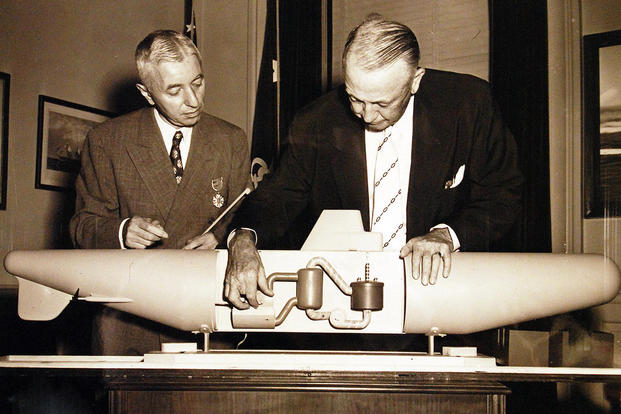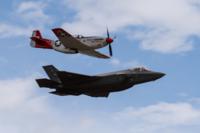Rear Admiral Hyman Rickover fathered the nuclear navy and combined the necessary qualities of a brilliant engineer and an astute diplomat needed to bring the Navy through the treacherous straits of Cold War espionage and deception, transforming an aging fleet of diesel WWII-era submarines into the force that brought new meaning to the old adage, "silent but deadly."
Born in the Jewish ghetto of the Polish city of Makow, on Jan. 27, 1900, Rickover emigrated to the United States with his parents at the age of six to settle in Chicago. Through congressional connections, his parents secured for their son an acceptance to the United States Naval Academy in 1918. He was commissioned an ensign in 1922. Rickover served on the destroyer USS La Vellette and the battleship USS Nevada before earning a Masters in Electrical Engineering from Columbia University. His fascination with the fledgling submarine service led to assignment and command of fleet boats S-9 and S-48 from 1929 to 1933. He took command of the USS Finch in 1937,the last fleet command of his career, his later selection as Engineering Duty Officer was the post he served in for the remainder of his naval career.
During World War II Rickover served in the Bureau of Ships as Head of the Electrical Section. After the war, with the unleashing of the nuclear genie, Rickover became part of the atomic submarine project at Oak Ridge National Laboratory in 1946. As director of the Naval Reactors Branch, he saw the harnessed power of the atom as the means to raise the stakes in the growing Cold War with the Soviet Union. Gone would be the dangerous necessity for submarines to snorkel to recharge their batteries. This new miracle of science would keep submarines where they belonged, cruising silently beneath the waves shadowing Soviet naval movements, collecting Soviet missile telemetry and eavesdropping on Soviet communications. His ambition propelled him to the top of the Atomic Power Commission where he forged relationships with congressmen and senators who in turn made the supremacy of a U.S. nuclear submarine fleet tantamount in the minds of national defense leaders.
Under Rickover's supervision the world's first nuclear powered submarine, the USS Nautilus began construction in 1952. She became a public relations coup for the navy and for Rickover when the historic message "Underway on nuclear power," flashed from the Nautilus on Jan. 17, 1955. Each voyage outshone the last and increased Rickover's budget for more research and design and to build the nuclear fleet.
She was the first ship to pass beneath the North Pole on August 3, 1958, during a four day, 1,830 mile cruise from the Atlantic to the Pacific. Rickover reveled in the accolades of being the Navy's most forward thinking innovator.
With this limelight, Rickover paid a price. He constantly upset General Accounting Office audits and appropriations committees by continuously going over budget on projects, covering cost overruns in the accounting of unrelated projects. Rickover's reputation of riding his research staff unmercifully was legendary. He dressed down the heads of his research departments and played mind games with prospective applicants from the Naval Academy who wanted to be part of his nuclear program.
Though even with his unorthodox methods he exacted an almost fanatical devotion from his staff and growing number of acolytes. This brashness rankled navy brass and Rickover found himself passed over for rear admiral twice. Only through the intervention of his patrons on Capitol Hill did he finally get his flag.
Nevertheless, Rickover's accomplishments remained too monumental to ignore. Throughout his long naval career his decorations included the Distinguished Service Medal, Legion of Merit, Navy Commendation Medal, two Congressional Gold Medals, as well as the title of Honorary Commander of the Military Division of the Most Excellent Order of the British Empire. In 1980, President Jimmy Carter, himself a nuclear engineer, naval officer and disciple of Rickover's tenets, presented the Presidential Medal of Freedom, the nation's highest non-military honor, to Admiral Rickover.
On January 31, 1982, after 63 years of service to his adopted country under 13 different presidential administrations, Admiral Rickover retired. His tenure, others say reign, as head of the Navy's nuclear program ran so long due to the fact that he had been declared exempt by Congressional mandate from the mandatory retirement age for senior admirals due to his unique insight and knowledge.
Though he passed away on July 8, 1986, his name is memorialized in the attack submarine USS Hyman G. Rickover (SSN 709) and Rickover Hall at the U.S. Naval Academy.















